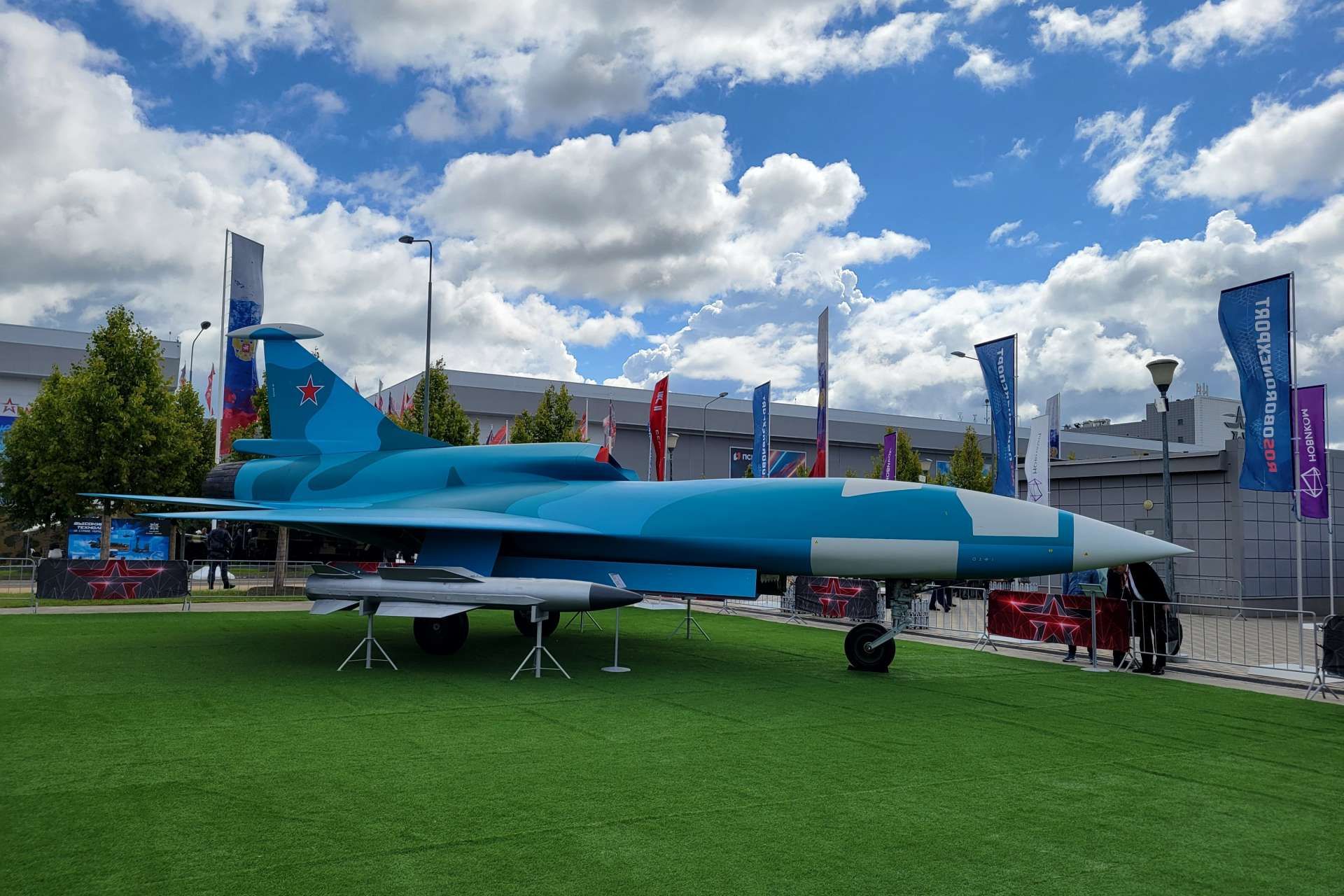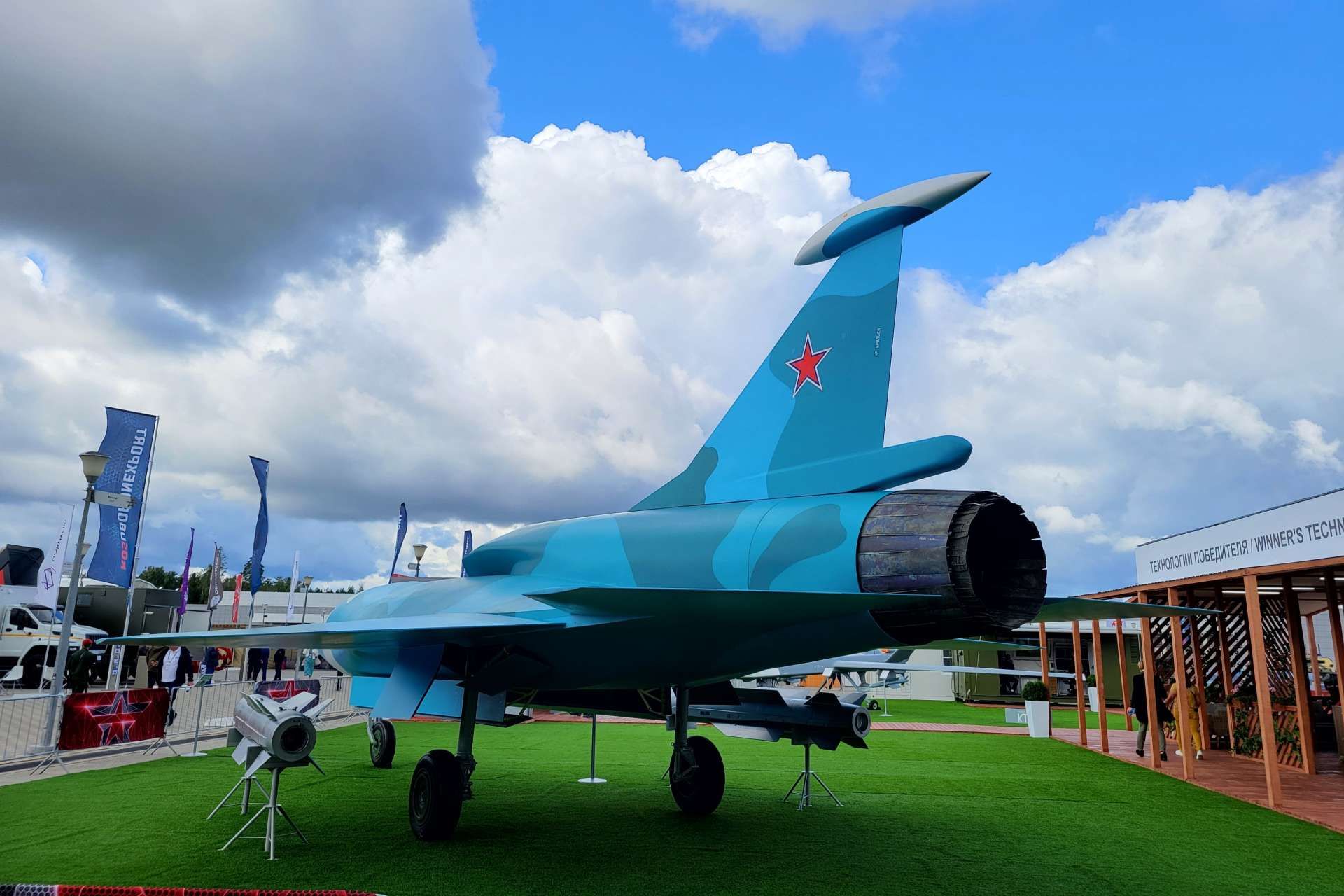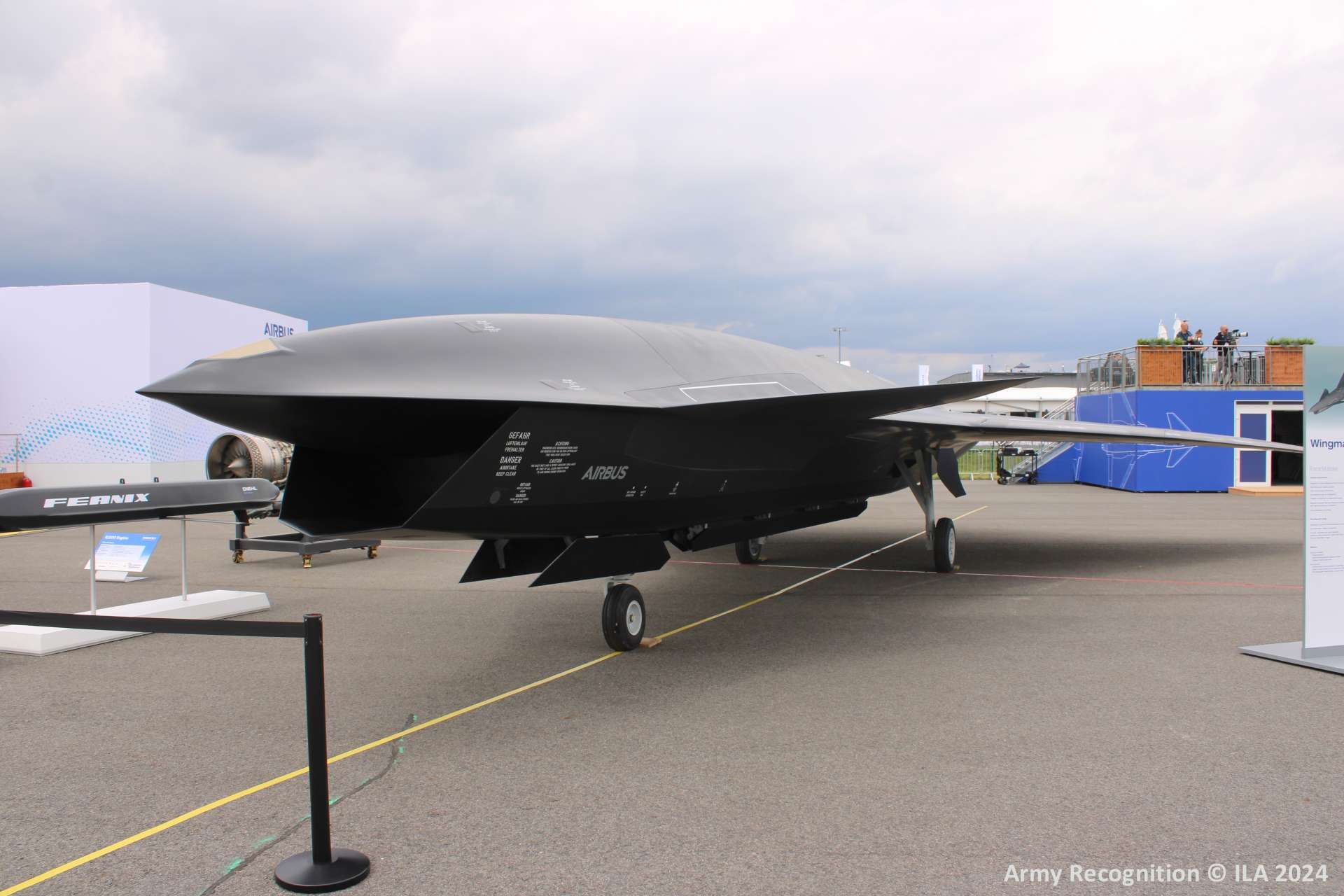Breaking News
Russian Kronstadt Group presents new Grom-U wingman drone to assist Su-35 and Su-57 fighters.
At the Army-2024 exhibition, the Kronstadt Group presented an updated version of its Russian-made Grom supersonic jet unmanned aerial vehicle (UAV), informally designated as Grom-U. This latest version is a modification of the original model, which was first unveiled at the Army-2020 forum. The most significant change in this iteration is the replacement of the initially planned flat-nozzle engine with a conventional engine, likely a decision aimed at reducing production costs. The Grom-U, currently under development, is designed to function as a "loyal wingman" for manned aircraft such as the Su-35 and Su-57 fighters, aligning with contemporary aerial combat strategies.
Follow Army Recognition on Google News at this link

The Grom-U, currently under development, is designed to function as a "loyal wingman" for manned aircraft such as the Su-35 and Su-57 fighters, aligning with contemporary aerial combat strategies. (Picture source: Kronstadt Group)
The most notable change is the replacement of the initially planned flat-nozzle engine with a conventional one, likely an RD-33 or RD-93 engine, potentially with afterburner capability. This change, along with a simpler overall design, seems aimed at reducing production costs, making it more competitive against alternatives like the Su-70B. The updated design is less stealthy than its predecessor but still incorporates measures to reduce its radar cross-section, including an internal weapon bay and an S-shaped intake.
The design of the Grom-U is reminiscent of the Tu-141 Strizh, a Soviet-era operational-tactical reconnaissance UAV developed by OKB Tupolev. The Tu-141, which made its debut in the 1970s, was originally designed for deep reconnaissance missions, equipped with both photo and infrared capabilities. Recently, Ukrainian engineers have weaponized the Tu-141, converting it into a cruise missile used against Russian forces. The Tu-141's robust engineering and operational versatility, particularly its ability to reach speeds of 1,110 km/h and operate at altitudes up to 6,000 meters, likely served as a historical precedent for the development of the Grom-U.
The Grom UAV was initially introduced as a full-size mockup at the Army-2020 forum and has since attracted attention from both domestic and foreign military delegations, particularly during its updated showcase at the Army-2024 forum. According to the lead designer at Kronstadt, the development of the Grom is driven by the goal of protecting pilots and piloted aircraft by assigning the UAV to undertake high-risk tasks during operations.

The design of the Grom-U is reminiscent of the Tu-141 Strizh, a Soviet-era operational-tactical reconnaissance UAV developed by OKB Tupolev, which made its debut in the 1970s. (Picture source: Michael Jerdev)
Development of the Grom UAV is being carried out for the Russian Aerospace Forces, with the project reaching the preliminary design stage, as confirmed during the Army-2022 forum. The UAV is intended to work closely with manned aviation, executing missions that include precision strikes, reconnaissance, and the suppression of air defenses. Its design emphasizes a tactic where the Grom would fly ahead of a group of aircraft, prompting enemy air defenses to reveal their positions by engaging the UAV. Following the exposure of these defenses, the Grom is designed to coordinate a strike with a swarm of 10-12 Molniya (Lightning) strike drones, which would be launched from a carrier aircraft. This approach aims to neutralize enemy air defenses, facilitating further attacks by manned aircraft such as Su-57 fighters, Su-34 bombers, and the S-70 "Okhotnik" UAV.
The Grom-U is equipped with four hardpoints, two under the wings and two inside the fuselage, allowing it to carry various munitions. These include Kh-38 air-to-surface guided missiles and guided aerial bombs with calibers ranging from 100 to 500 kilograms, along with unguided bombs of similar sizes. The UAV is also anticipated to be capable of carrying the Izdeliye 85 guided missile, which would enhance its strike capabilities. In addition to its own weaponry, the Grom has the capability to control a swarm of up to ten Molniya strike drones, which could be launched from another carrier, thereby increasing its operational flexibility.
Regarding its technical specifications, the Grom-U can carry a maximum combat load between 1,000 to 2,000 kilograms. It is capable of reaching a maximum speed of 1,000 kilometers per hour, with a cruising speed between 650 and 800 kilometers per hour. The UAV operates at altitudes up to 12,000 meters and has an operational range of 700 kilometers, enabling it to engage targets over considerable distances.

The most notable change is the replacement of the initially planned flat-nozzle engine with a conventional one, likely an RD-33 or RD-93 engine, potentially with afterburner capability. (Picture source: Michael Jerdev)
The Grom-U is designed to serve as a "wingman" in the forward attack echelon, working in coordination with manned aircraft like the Su-35 and Su-57 fighters to enhance the effectiveness of aerial operations. Its roles include detecting and engaging tactical and local air defense systems, conducting reconnaissance, and performing electronic intelligence gathering. The UAV's missions also include the ability to strike surface and land targets at tactical and operational depths, which could be of particular interest to the Russian military.
The "loyal wingman" concept is under development in several countries. Australia is working on Boeing's MQ-28 Ghost Bat in collaboration with the Royal Australian Air Force. The United States is advancing projects such as Kratos's XQ-58A Valkyrie and the Air Force’s Collaborative Combat Aircraft (CCA) initiative. Meanwhile, Russia and India are developing their own projects, including the Sukhoi S-70 Okhotnik and HAL CATS Warrior, respectively. Europe has also initiated its own program with Airbus's Loyal Wingman initiative, which seeks to integrate unmanned systems with European fighter jets.
The Grom-U is part of an integrated aviation weapons system, which includes the UAV itself, a ground control station (operator module), and an aviation armament system (KAB). This system is intended to ensure that the Grom-U can be deployed effectively in various combat scenarios, whether in support of manned aircraft or operating independently. This new variant of the Grom UAV is expected to play a role in the modernization of aerial combat tactics and the operational capabilities of the Russian Aerospace Forces.

Europe has also initiated its own program with Airbus's Loyal Wingman initiative, which seeks to integrate unmanned systems with European fighter jets. (Picture source: Army Recognition)


























